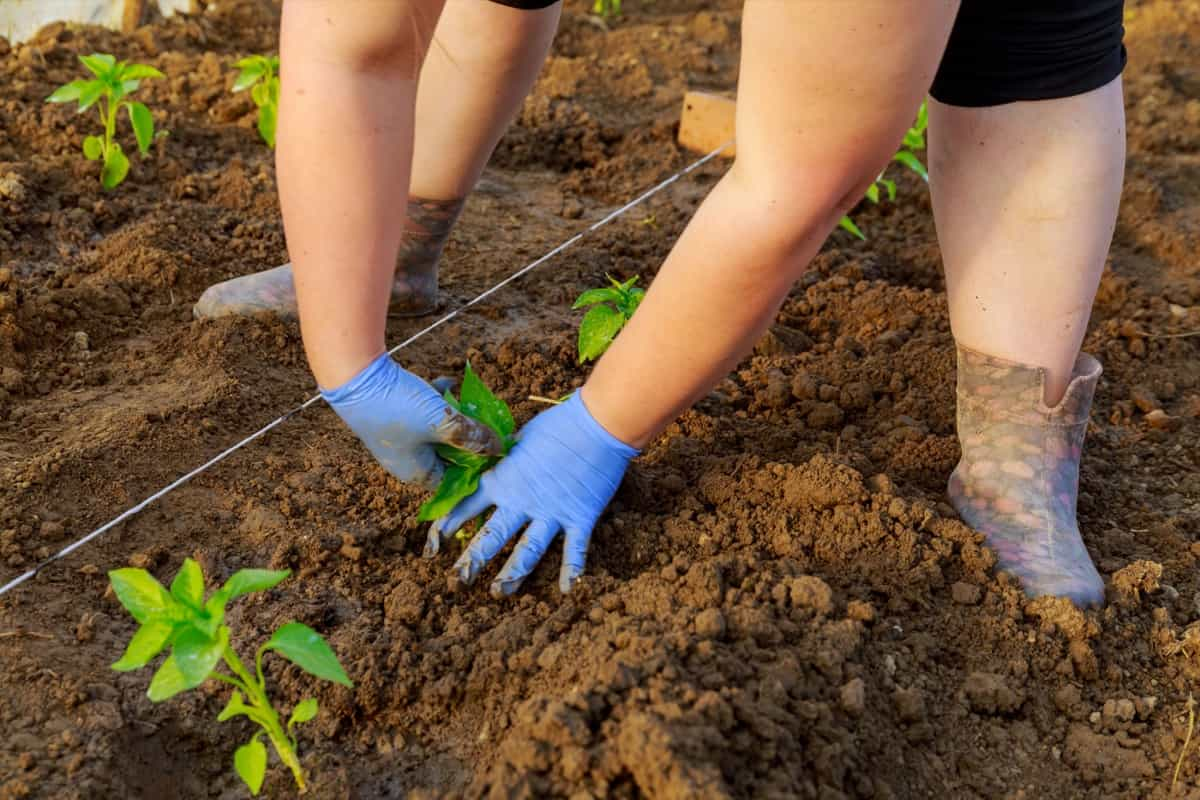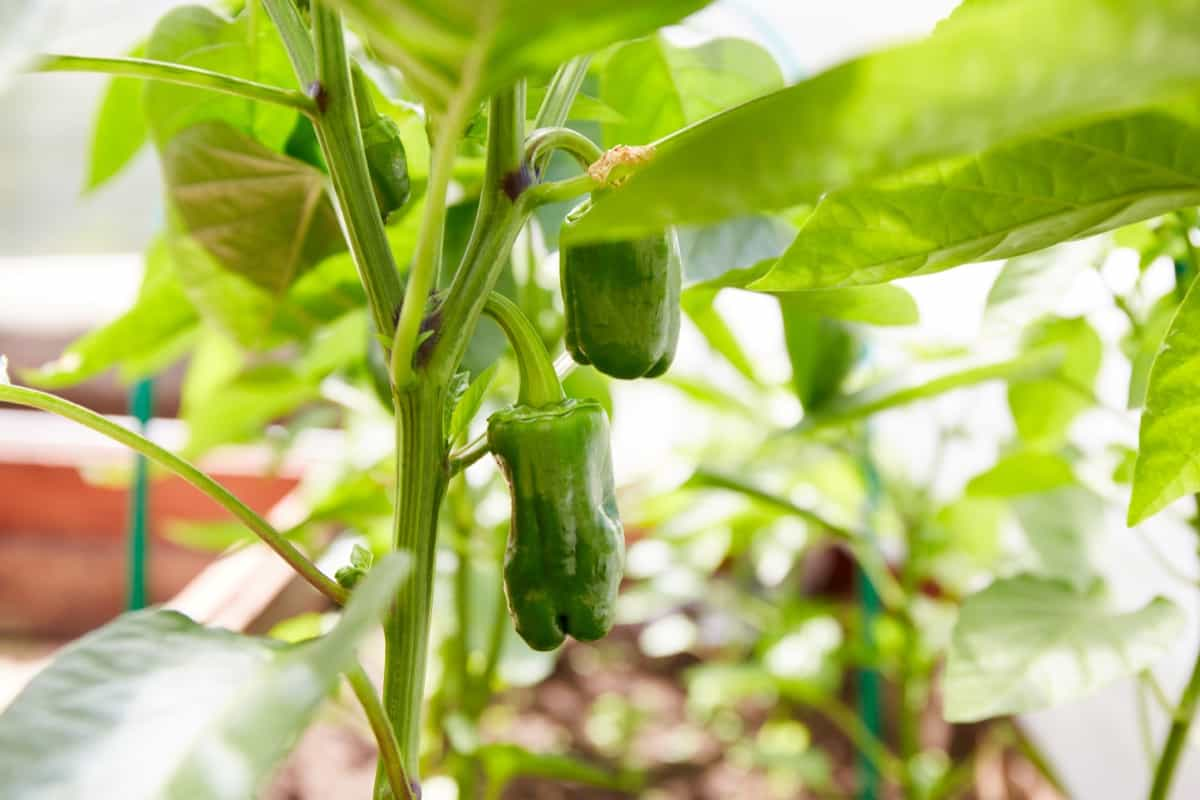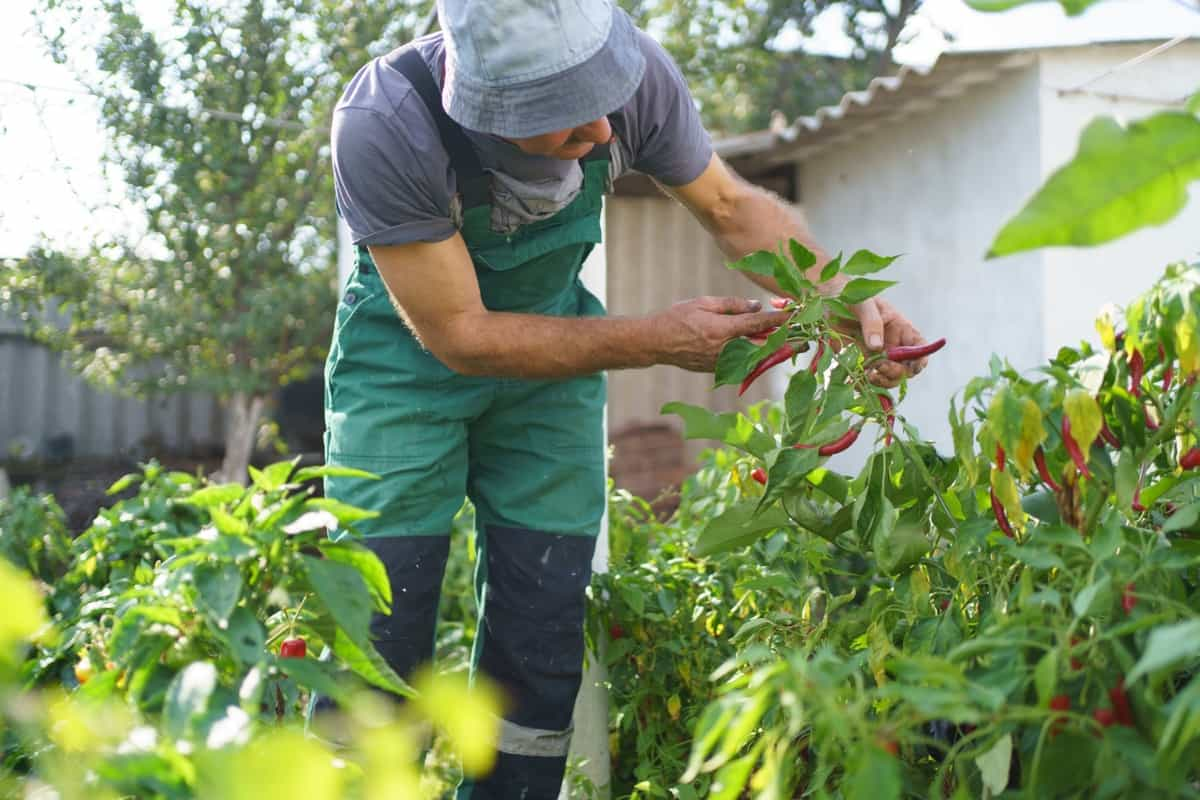California, known for its diverse climate and fertile soils, is excellent for cultivating various pepper varieties. When to plant peppers in California varies depending on the region, specifically when considering the differences between Northern and Southern California. While growing peppers in Southern California has distinct advantages due to the mild climate, Northern California also provides suitable conditions for this crop.

When to plant jalapeños in Southern California and peppers in Northern California can differ slightly based on temperature variations, so it’s crucial to be informed. Any gardener can achieve a bountiful pepper harvest in the Golden State by understanding the local conditions.
Understanding the Climate and Soil Requirements for Growing Peppers in California
California’s vast expanse means the state boasts various climates, from coastal zones to interior valleys. Peppers prefer a warm and sunny environment. However, they can tolerate some mild chill. The state’s Mediterranean climate, especially in Southern California, offers the warmth that peppers crave.
Soil plays an equally vital role. Loamy, well-draining soil rich in organic matter promotes healthy root growth, ensuring strong pepper plants. Regular soil tests can help determine the nutrient content and pH levels, enabling gardeners to make any necessary amendments for optimal pepper growth.
Selecting the Right Varieties of Bell Peppers, Hot Peppers, Banana Peppers, and Jalapenos for California
Choosing the right pepper variety is crucial for a successful harvest in California. While bell peppers are popular for their sweet and crunchy texture, hot peppers are cherished by those seeking a spicy kick. Banana peppers, with their mild and tangy flavor, are ideal for pickling or fresh consumption. On the other hand, Jalapenos are versatile, making their way into salsas, grills, and various dishes. Each variety has its own growing requirements and maturity duration. Hence, selecting varieties known for thriving in California’s diverse climates is wise.
In case you missed it: How to Compost in California: Southern, Northern, and Central Regions

Preparing the Soil and Providing Adequate Drainage for Pepper Plants in California
Once the right variety is chosen, preparing the soil is essential. Begin by tilling the ground to break any compacted layers. This process not only aerates the soil but also aids in water penetration. For successful pepper cultivation, ensuring proper drainage is paramount. Inadequate drainage can cause root rot, a frequent threat to pepper plants. Creating raised beds or adding organic matter like compost can enhance soil structure and drainage, providing a conducive environment for pepper roots to flourish.
Determining the Ideal Planting Time for Bell Peppers, Hot Peppers, Banana Peppers, and Jalapenos in California
Planting peppers requires precise timing. Typically, the best period is post final spring frost, once the soil has adequately heated. This might be as early as February or March in Southern California, while Northern California gardeners may need to wait until April or even early May. Bell peppers, banana peppers, and jalapenos have similar planting timeframes, but hot peppers, depending on the variety, might require slightly warmer soil temperatures. Keeping an eye on local weather predictions can guide gardeners on the best planting dates.
In case you missed it: When to Prune Roses in California: Trimming Techniques for Southern, Northern, and Central Regions

Providing Sufficient Sunlight and Temperature Control for Pepper Plants in California
Pepper plants thrive in full sunlight, requiring at least 6-8 hours daily. While they appreciate warmth, excessively high temperatures can hinder fruit set. Consider using shade cloths during the peak afternoon hours in extremely hot regions to protect the plants. For colder areas, especially some parts of Northern California, gardeners might benefit from using row covers or cold frames during the early growth stages. These tools ensure a stable temperature range, helping young pepper plants establish themselves without the threat of sudden cold snaps.
Watering Techniques and Irrigation Systems for Pepper Plants in California
Water is vital for pepper growth, but its management is equally crucial. Overwatering can be as harmful as underwatering. Peppers prefer deep, infrequent watering as opposed to frequent shallow irrigation. This method encourages roots to grow deeper, searching for moisture, leading to stronger plants. Drip irrigation systems are perfect for peppers, delivering water directly to the roots and minimizing evaporation losses. Gardeners should ensure that the soil remains moist but not waterlogged, adjusting their watering routines based on weather conditions.
Mulching Your Pepper Plants in California
Mulching offers multiple benefits for pepper cultivation. Not only does it retain soil moisture, but it also regulates soil temperature, suppresses weed growth, and prevents soil erosion. Organic mulches like straw, leaves, or grass clippings break down over time, enriching the soil with valuable nutrients. A 2-3 inch layer of mulch around pepper plants can shield the soil from the sun’s direct heat, ensuring it remains cool and moist, providing an ideal environment for peppers.
Fertilizing and Nutrient Management for Optimal Pepper Growth in California
Feeding pepper plants the right nutrients at the right time can make all the difference. Start with a balanced fertilizer at planting time, ensuring the plants get an initial boost. As they begin flowering and fruiting, they switch to a phosphorus-rich fertilizer to promote fruit production. Avoiding excessive nitrogen is essential, as it can lead to lush foliage with minimal fruiting. Regular soil tests can guide gardeners in understanding nutrient deficiencies, allowing them to tailor their fertilization routines for the best results.
Controlling Pests and Diseases in Pepper Plants in California
While flourishing in the state’s favorable climate, Pepper plants in California are not immune to pests and diseases. Common pests like aphids, whiteflies, and pepper weevils can be addressed using insecticidal soaps or neem oil, which are environmentally friendly and effective.
Crop rotation and regular garden inspection can prevent and mitigate the impacts of diseases such as bacterial wilt or pepper blight. It’s crucial to avoid using broad-spectrum pesticides, as these can harm beneficial insects. Using integrated pest management (IPM) techniques that combine biological, cultural, and chemical approaches helps maintain a healthier pepper garden in California.
Pruning and Supporting Pepper Plants to Maximize Yield in California
Pruning and supporting pepper plants are vital practices for maximizing yield in California. Pruning helps direct the plant’s energy toward producing more bountiful fruits. Plants can focus on fruiting by removing lower leaves and occasionally pinching off the growing tips.
Using supports, such as stakes or cages, ensures that the branches don’t break or sag as peppers grow and become heavy. These structures offer assistance to plants and enhance airflow, decreasing the chance of fungal infections. Overall, careful pruning and adequate support can significantly boost the yield and quality of pepper fruits in California gardens.
Harvesting and Storing Peppers from Your California Garden
The joy of gardening culminates in the harvesting phase, and peppers are no exception. When harvesting peppers in California, it’s essential to remember that they can be picked at various stages, depending on the desired flavor and use.
In case you missed it: 10 Best Cut Flowers to Grow in Southern California: Easiest Cut Flowers to Plant

While green peppers are essentially unripe but still flavorful, allowing them to mature gives a sweeter taste and vibrant colors. Once harvested, peppers can be stored fresh in the refrigerator for up to two weeks. For longer storage, peppers can be dried, frozen, or canned, ensuring that your California garden’s spicy and sweet flavors can be enjoyed for months to come.
Conclusion
With the right knowledge and practices, California provides an excellent environment for pepper cultivation. By respecting each pepper variety’s specific needs and considering the local climate, gardeners can look forward to a spicy, flavorful, and fruitful harvest.
- Ultimate Guide to Ossabaw Island Hog: Breeding, Raising, Diet, and Care
- Ultimate Guide to Juliana Pig: Raising Facts, Size, Diet, Care, and Lifespan
- Raising Lleyn Sheep: Disadvantages, Price, Uses, Characteristics, and Care
- Ultimate Guide to Meishan Pig: Breed Facts, Breeding, Raising, and Care
- Ultimate Guide to Teacup Pigs: Raising, Diet, Lifespan, Cost, and Care
- Guide to Raising Poll Dorset Sheep: Facts, Profile, Characteristics, Uses, and Care
- Ultimate Guide to Bighorn Sheep: Characteristics, Diet, Lifespan, Breeding, and Lifecycle
- Ultimate Guide to Raising Katahdin Sheep: Farming Facts, Breed Profile, Uses, and Care
- Ultimate Guide to Raising Oreo Cows: Belted Galloways Farming Facts, Profile, Uses, and Care